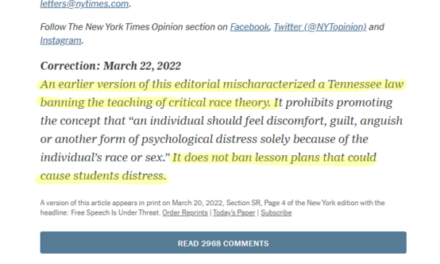
LA Times charter school costs story from last week
I was surprised last week to see that the LA Times ran a story about a new UTLA-commission charter school costs report without getting it thoroughly vetted by others, but apparently that practice isn’t as uncommon as I thought.
“I don’t think it’s that unusual,” said interim education editor Bob Sipchen in a Friday phone call in which he described the circumstances that allowed him to go forward with the piece. “I don’t know of any journalist who turns down information.”
“You get your information wherever you can,” said Sipchen, as long as you’re “completely fair about how you present it.”
Hmm. Ok. Let’s leave that for a minute.
Common or not, is there something wrong with a newspaper running a story under these kinds of limitations, or did the LA Times rush to get something published in a way that might mislead readers? What were the realistic alternatives?
[Disclosure: THE GRADE has received funding from the AFT, of which UTLA is a member, and Education Post, which receives funding from the Broad, Walton, and other foundations.]
The LA Times story is notable not only because it raises questions about how advocates supply journalists with news that gets shown to the public, but also because LAUSD’s 221 charters and 100,000 students make it the biggest charter district in the country.
Similar debates — and coverage decisions — are being made by journalists all over the country.
The LA Times is also one of the handful of newsrooms that has taken outside funding to bolster its education coverage — a move that has been controversial among journalists and education funders. Is the LA Times producing high-quality education coverage? Are the outside funders seeing the improvements in size and quality of coverage that they hoped to see?
By all accounts, the LA teachers union offered the LA Times an advance look at a report purporting to show that LA-area charter schools costs the district tons of cash. But the condition was that the paper couldn’t show the report to other folks — the district, the charter school people, outside experts.
The LA Times’ Howard Blume wrote the report up, indicating that charters were
“bleeding money” from the district (and also that the report came from the union). Charter schools’ growth resulted in “a decline of more than $500 million a year — about 7% — in the district’s core budget,” reported the LA Times “a net loss of about $4,957 per student, the study says.”
The story also indicated that the report was provided to the paper with the “the stipulation that the report not be distributed to outside parties.”
According to Sipchen, reporter Howard Blume actually won permission to talk about the report to others “any way we wanted to,” short of passing it over. “We were able to discuss [the report] as specifically as we wanted to. We just weren’t allowed to show it.”
However, the quotes from researchers like Erik Hanushek and California Charter Schools Association are vague. They don’t sound like the reactions of people who know the main numbers from the report.
To be sure, the initial LA Times story goes into great detail about who wrote the story, how much it cost, and even into the weeds of the policy recommendations that accompanied the report. In these regards, the piece seems extremely conscientious.
But still, it doesn’t seem like readers got the whole story.
What else could the LA Times have done to have come up with an even better result? Four variations come to mind:
The paper could have declined to take the story without being able to show it to outside experts, under embargo, and let UTLA accept the condition or try and find another outlet to run the story in a way that’s favorable to them. The paper sells itself short when it gives in to conditions set by stakeholders — especially when there aren’t many other large-circulation outlets that UTLA could have gone to.
It could have traded the short-term advantage of being first to report the findings for a more informed, nuanced story that put the methods, findings, and larger debate in context. Even if its details and conclusions had been different, an LA Times version of the story written by LA School Report could have been deeply useful. See
here.
Even if it had accepted the UTLA’s conditions, it could have more thoroughly vetted the report conclusions and methods with an outside expert, for starters – to get at the underling premise of the report and its data. There’s no shortage of economists and financial experts who could look at some of the data and confirm or debunk its methods, but no such insights are given in the piece.
Last but not least, it could have produced a more analytic second-day story than the one it ran, including a deeper look at the data and the premise of the piece. The LA Times’ Sonali Kohli penned a roundup of reactions,
some of which suggest the report is a crock. The headline: “Do new charter schools really cost L.A. Unified more than $500 million a year?” The story focused on reactions but didn’t give much depth, and was online-only, meaning that many fewer folks likely saw it.
This is a small but emblematic example of what’s going on in education journalism. Here and in other situations, advocates on all sides of the education debate are manipulating the news, relying on news outlets’ knee-jerk reaction to breaking news and exclusives (and nervousness about the role of journalism). News outlets are letting this happen, and claiming that the caveats and transparencies they provide are sufficient to counter the overall impressions that their work leaves readers with.














